If you have a cat, you know that they enjoy exploring and climbing. There are cats who don’t care about succulents and won’t eat them, while there are cats who will perform acrobatics in order to eat the succulent you placed on the highest shelf.
If you own a cat or other animals, you should consider the toxicity and impact of introducing new succulents into your home. Especially now that succulents have become popular and there is more access to exotic varieties. Pet owners should consult their vets immediately if they suspect their pet has consumed toxic plants or succulents.
Keep reading if you want to know more about whether or not your precious kitty gets sick from nibbling on a succulent.
Are succulents poisonous to cats?
Yes, they can be poisonous to cats. Most succulents, though, do not appear to be toxic.
Understanding the various types of succulents and their toxicity helps better understand the safety of succulents and cats. Whenever you are researching, it is best to use the scientific names, as the common names differ depending on the region.
Succulents can be identified by their leaves, flowers, and growth habits, as well as crowd-sourcing information through our succulent type index, succulent identification apps, and succulent Facebook groups.
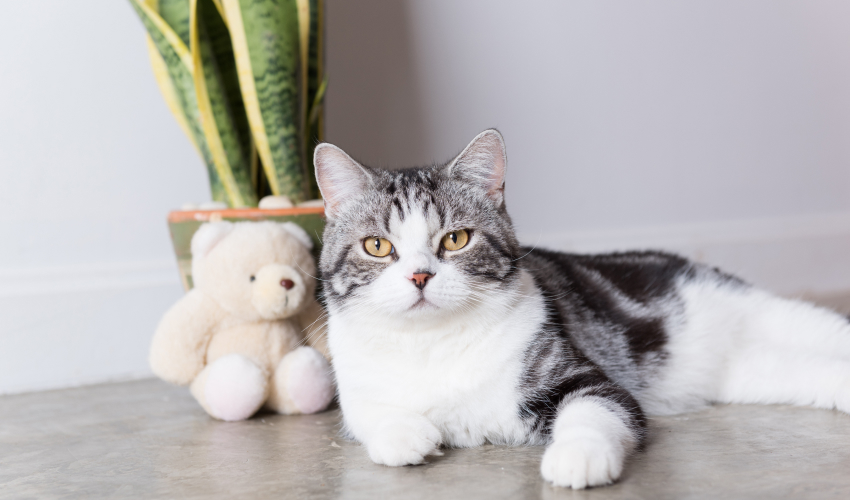
Poisonous Succulents
Here is a list of popular succulents toxic to cats:
Aloe barbadensis (Aloe Vera)
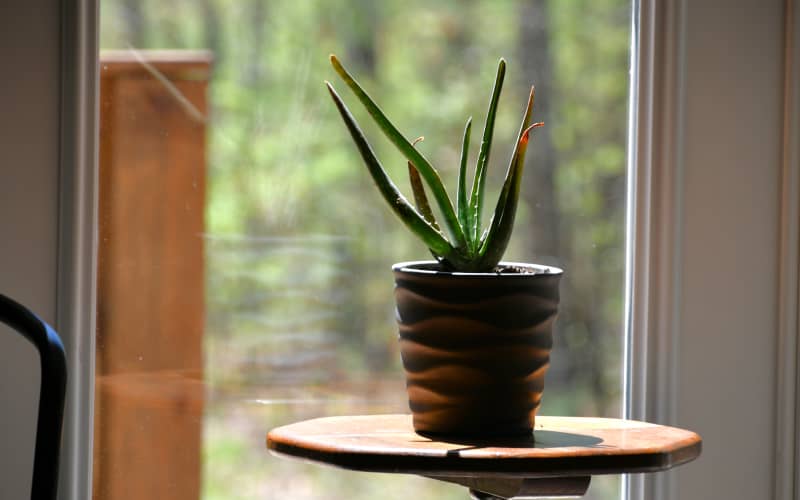
Aloe barbadensis is a succulent species of the genus Aloe. Having some 500 species, Aloe is widely distributed, and is considered an invasive species in many world regions. It is a very common succulent and used for medicinal purposes. It contains glycosides, anthraquinones, and anthracene and can cause gastrointestinal/stomach issues, and changes in urine color(red).
Euphorbia tirucalli (Pencil Cactus)
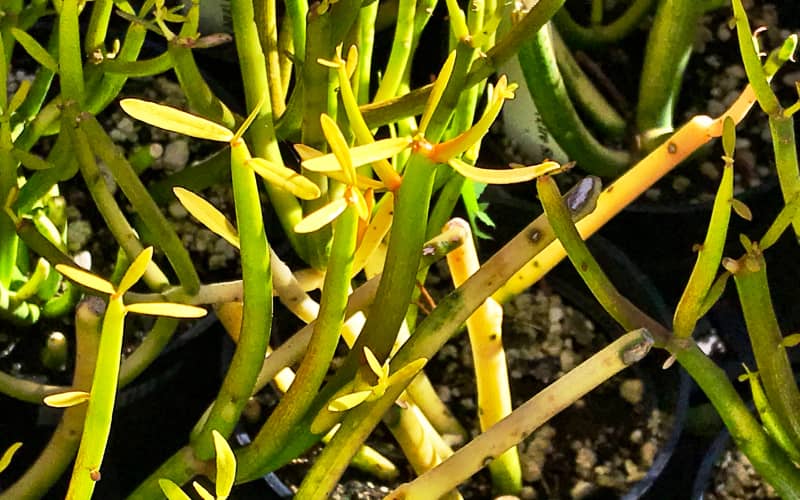
Often referred to as aveloz, Indian tree spurge, naked lady, pencil tree, pencil cactus, or milk bush, Euphorbia tirucalli is a tree that grows in semi-arid tropical climates. Landscape designers often use it as a vertical accent. It causes diarrhea, drooling, irritation and vomiting in your furry friend. The milky latex sap on a pencil cactus can also cause skin irritation.
Crassula ovata (Jade Plant)
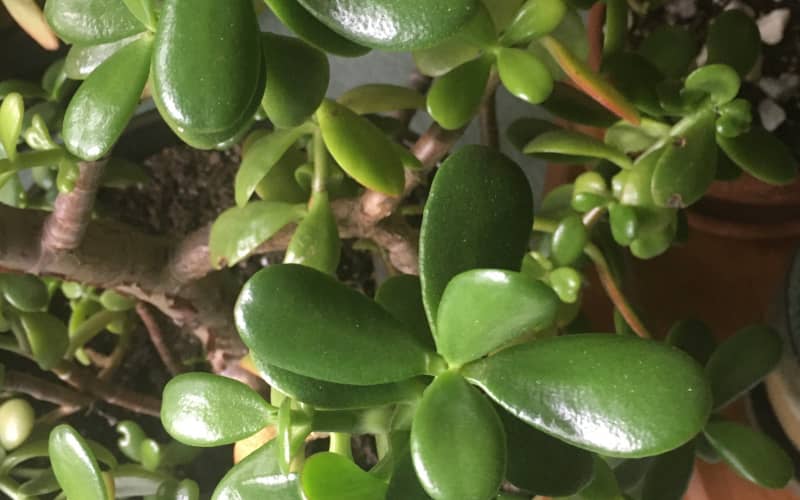
This succulent is also known as jade plant, lucky plant, money tree, and money bush. It is native to the KwaZulu-Natal region of South Africa and the Eastern Cape region of Mozambique, and is cultivated worldwide as a houseplant. It’s fleshy leaves can cause vomiting, lethargy, ataxia, bradycardia, weakness, and increased aggression if ingested. Unfortunately, its toxins are not yet known.
Crassula arborescens (Silver Jade / Silver dollar)
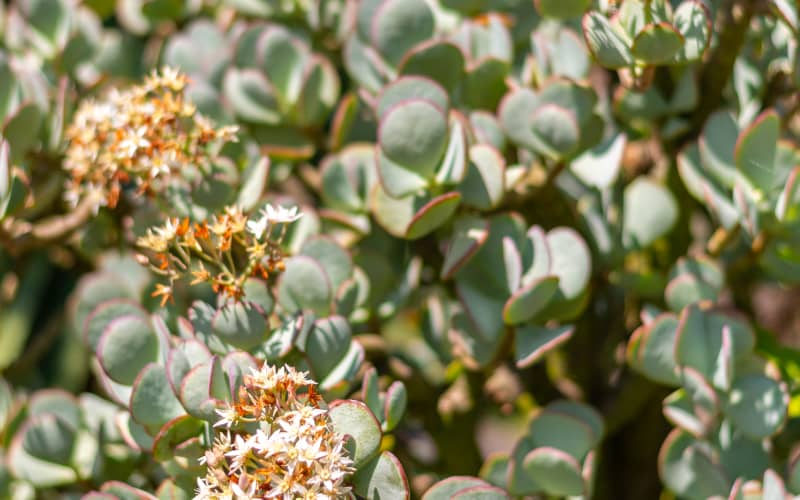
A species of succulent in the family Crassulaceae, Crassula arborescens is also known as the silver jade plant, silver dollar plant, beestebul, Chinese jade, money plant, or money tree. This succulent is endemic to the Western Cape region of South Africa. Vomiting, drunkenness, and tremors are common symptoms of ingestion.
Curio rowleyanus (String of Pearls)
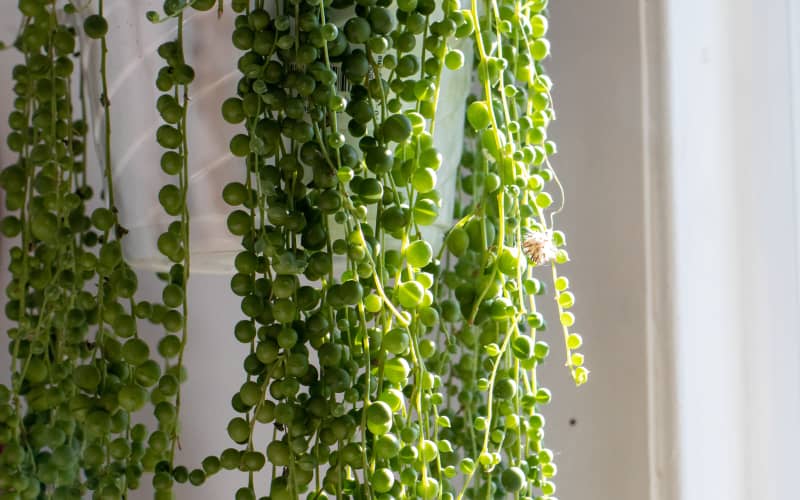
Curio rowleyanus, syn Senecio rowleyanus, is a flowering succulent in the Asteraceae family. This creeping, perennial, succulent vine is native to arid regions of southwest Africa. In nature, its stems trail on the ground, rooting where they touch and forming dense mats. This succulent, which contains pyrrolizidine alkaloids that inhibit cell division primarily in the liver, can cause symptoms of poisoning including vomiting and gastrointestinal problems. Vomiting, drooling, increased aggression, diarrhea, lethargy, and weakness are signs of ingestion.
SANSEVIERIA TARIFFSCIATA (SNAKE PLANT)
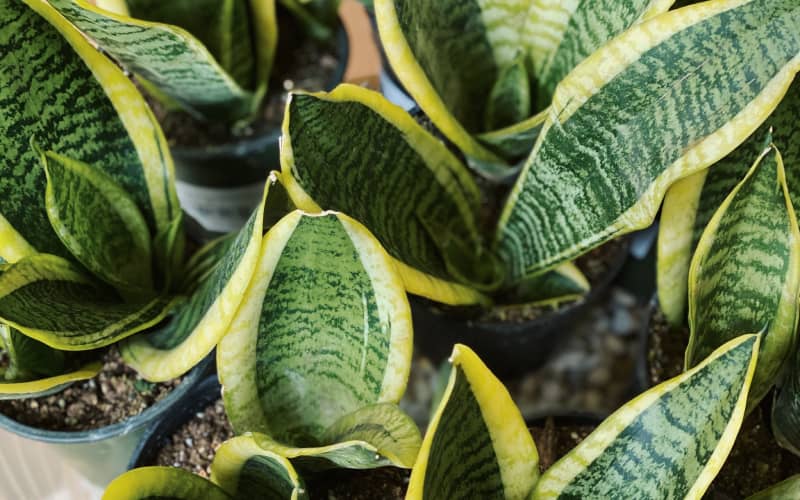
The plant is currently called Dracaena trifasciata, although it was previously known as Sansevieria trifasciata. Common names include Golden Birds Nest, Good Luck Plant, Mother-in-law’s Tongue, Snake Plant. Snake plants are very popular houseplants because of their ease of care and ability to survive neglect. Snake plants produce saponins that cause nausea, vomiting, and diarrhea.
Kalanchoe Tomentosa (Panda Plant)
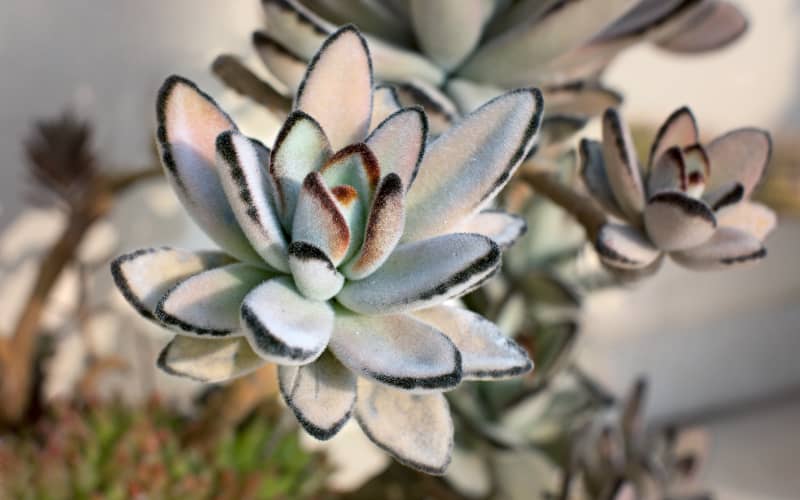
This succulent, also known as pussy ears or panda plant, is a member of the Kalanchoe genus. Native to Madagascar, Kalanchoe tomentosa has many cultivars, including ‘Golden Girl’, ‘Chocolate Soldier’, ‘Black Tie’ and ‘Teddy Bear’. Popular for its “furry” leaves that resemble velvet ears. Insoluble calcium oxalate crystals produced by this succulent can cause irritation of the mouth, excessive drooling, vomiting, difficulty swallowing, choking, and abnormal heart rhythms.
Cotyledon orbiculata (Pig’s Ear)
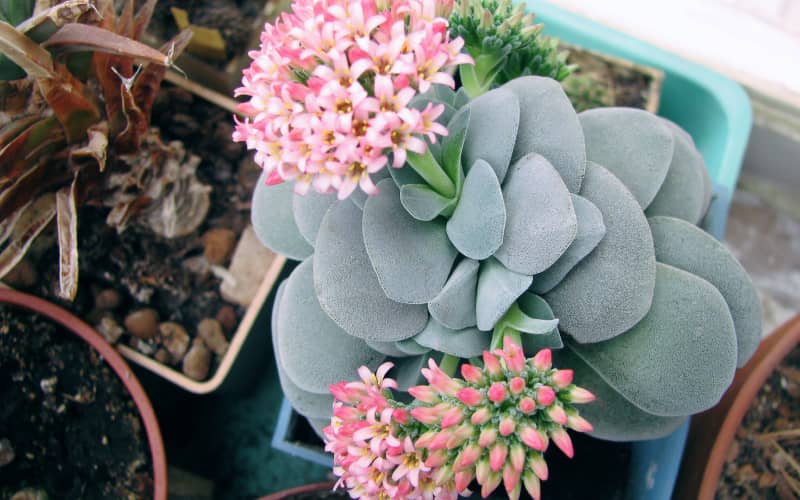
Commonly known as pig’s ear or round-leafed navel-wort, is a South African succulent belonging to the genus Cotyledon. It is thick leaved succulent that varies from green to grey with a red line around its edges. It has a powdery coating of wax that protects the succulent. It contains a toxic substance called cotyledontoxin that can cause vomiting, depression, and various cardiovascular problems.
Kalanchoe daigremontiana (Mother of Thousands)
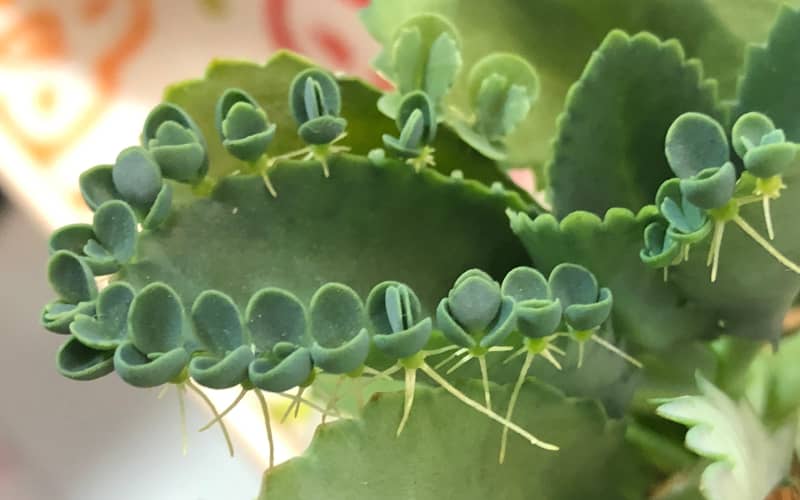
Formerly known as Bryophyllum daigremontianum and also referred to as mother of thousands, alligator plant, or Mexican hat plant, is a succulent native to Madagascar. It is a unique succulent with lots of visual interest, which makes it an attractive houseplant. Bufodienolides will cause adverse symptoms and even death. Symptoms include abnormal heart rhythms(irregular heartbeats), diarrhea, drooling, nausea, vomiting, weakness, and dilated pupils.
Kalanchoe delagoensis (Mother of Millions)
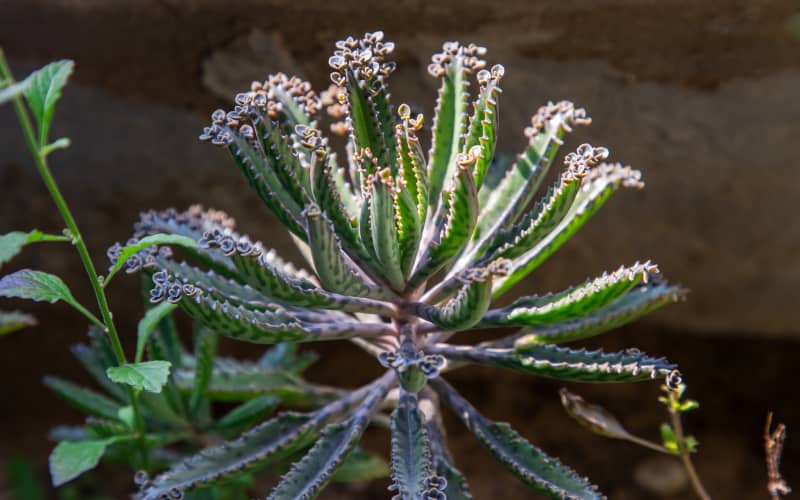
Formally known as bryophyllum delagoense, commonly known as mother of millions or chandelier plant, is native to Madagascar. The succulent propagates vegetatively from plantlets that develop on the margins of its leaves, just like other members of the Bryophyllum genus. Bufodienolides in this succulent can cause symptoms such as vomiting, diarrhea, and abnormal heart rhythm in rare cases.
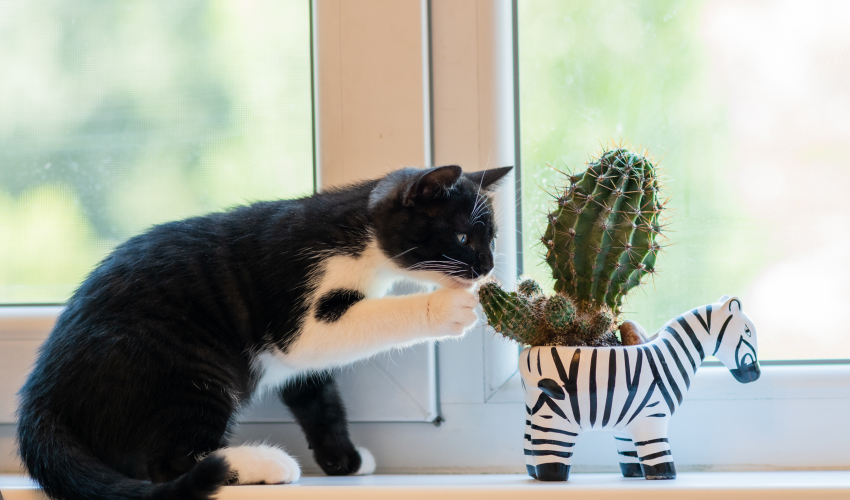
This is not an exhaustive list of succulents that are poisonous to cats. Many cats can’t resist the lure of a new succulent in their space. You should always avoid the succulents listed above and do thorough research on any succulent you plan on bringing into your home to avoid any interaction with poisonous plants.
Succulents Safe for Cats
The succulent plants in this selection are known to be safe for cats and are an excellent choice for your indoor or outdoor garden.
Echeveria
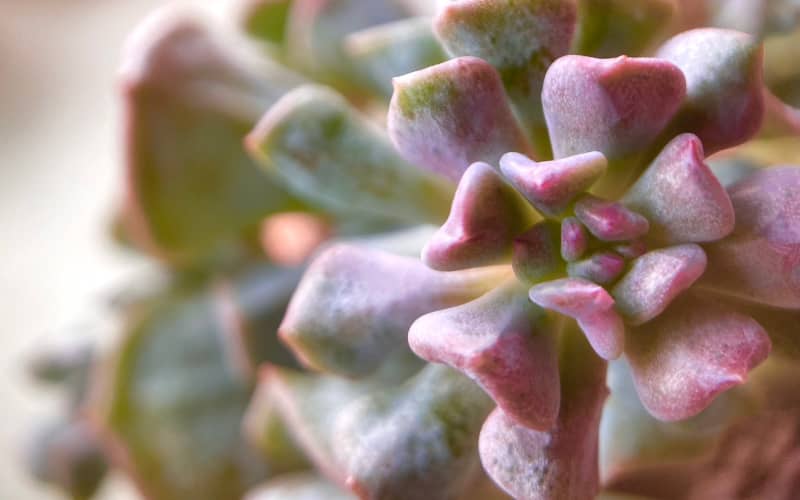
Echeveria is a large genus of flowering succulents in the family Crassulaceae native to semi-desert regions of Central America, Mexico, and northwestern South America. Echeverias are admired for their beautiful rosette and striking colors.
Haworthia
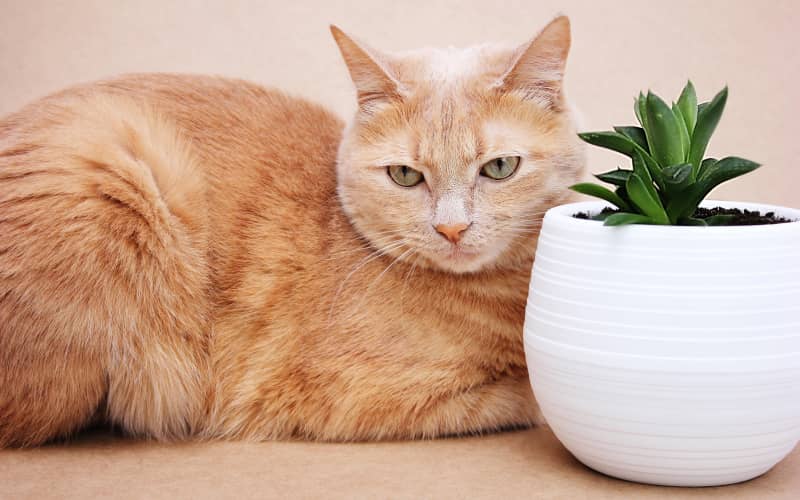
The Haworthia genus is a large genus of small succulents found throughout Southern Africa. Members of the family Asphodeloideae, they share many characteristics with miniature aloes, with the exception of their flowers, which have a distinctive appearance. These succulents are commonly grown in gardens and containers.
Dinteranthus vanzylii
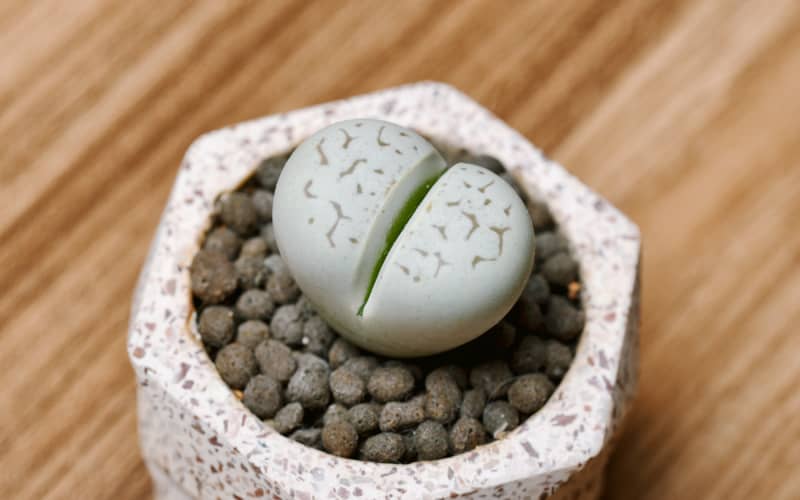
This succulent originates from Cape Province, South Africa, where they grow in fine sand and gravel with quartz stones in a very dry area with frequent rain in March. They belong to the Aizoaceae family. Their color and shape are similar to those of stones and pebbles found in their natural habitat.
Cephalocereus senilis – Old Man Cactus
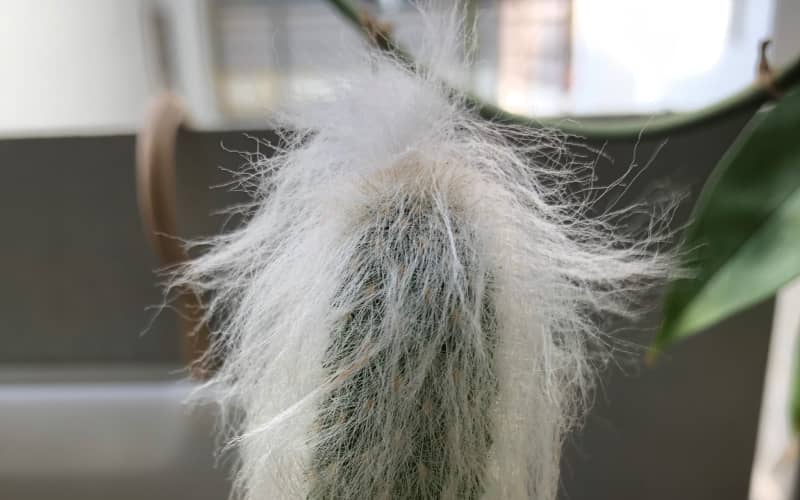
A native of eastern Mexico, Cephalocereus senilis is also known as the old man cactus. Although it is threatened in the wild, widespread propagation and popularity in cultivation have reduced the demand on wild populations.
Schlumbergera russelliana – Shrimp Cactus
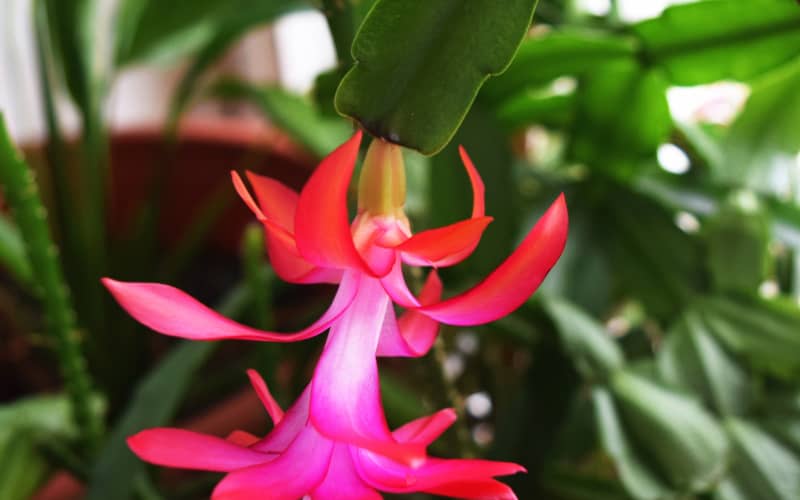
Schlumbergera russelliana belongs to the family Cactaceae. It is endemic to a small area of coastal mountains in south-eastern Brazil, where its natural habitat is moist forest. It is an epiphytic plant that grows on trees in moist forests.
Mammillaria fragilis – Thimble Cactus
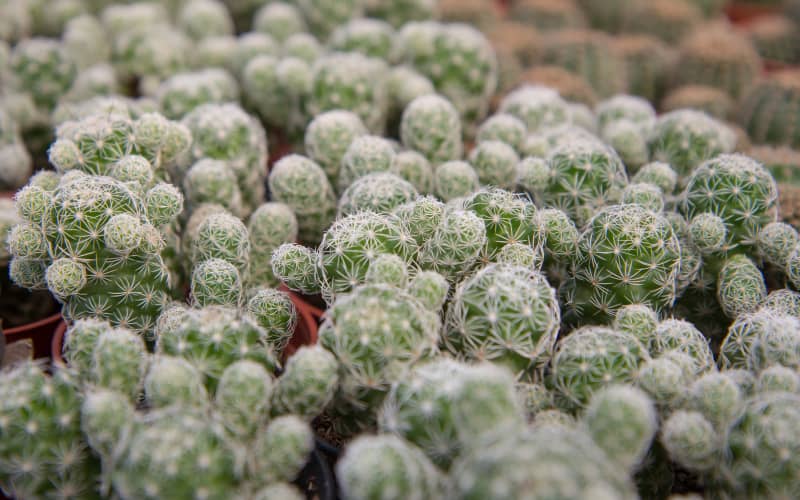
Mammillaria fragilis, also known as Thimble Mammillaria, belongs to the family Cactaceae, and it is native to Mexico’s eastern states (Hidalgo and Queretaro). The bright green, somewhat slender cactus has a slender, cylindrical body that branches and clusters freely, but the offsets readily detach.
Helpful Resources
Similar Topics in: Succulents
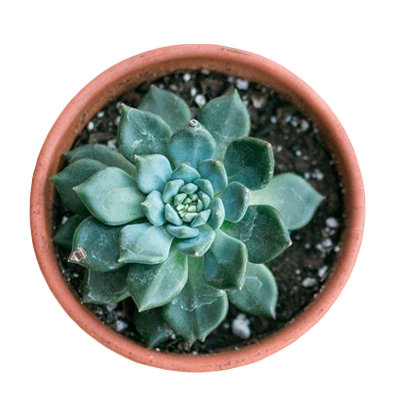
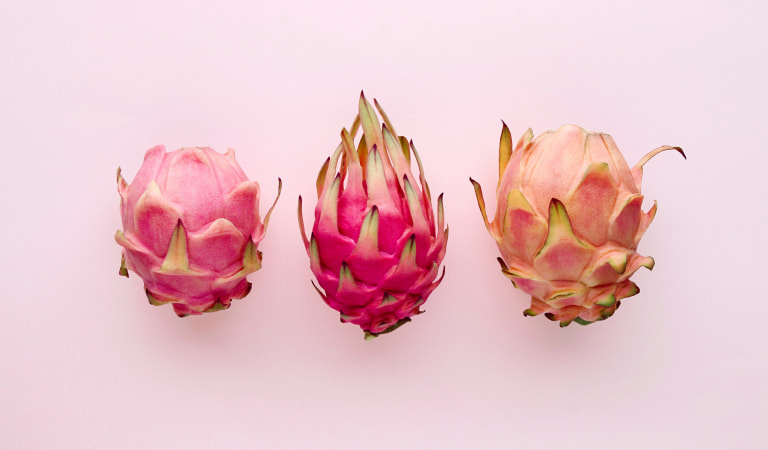
Leave a Reply